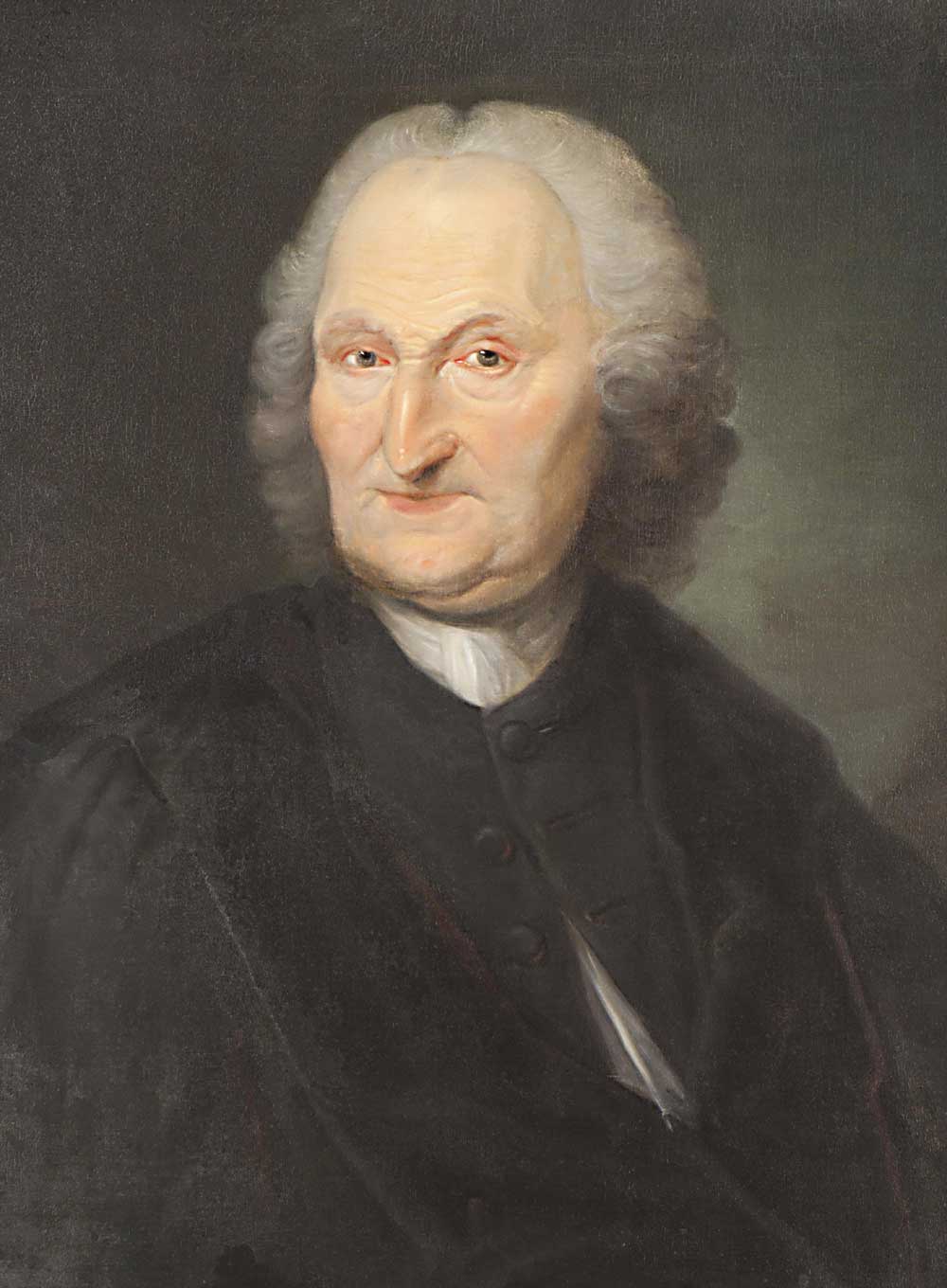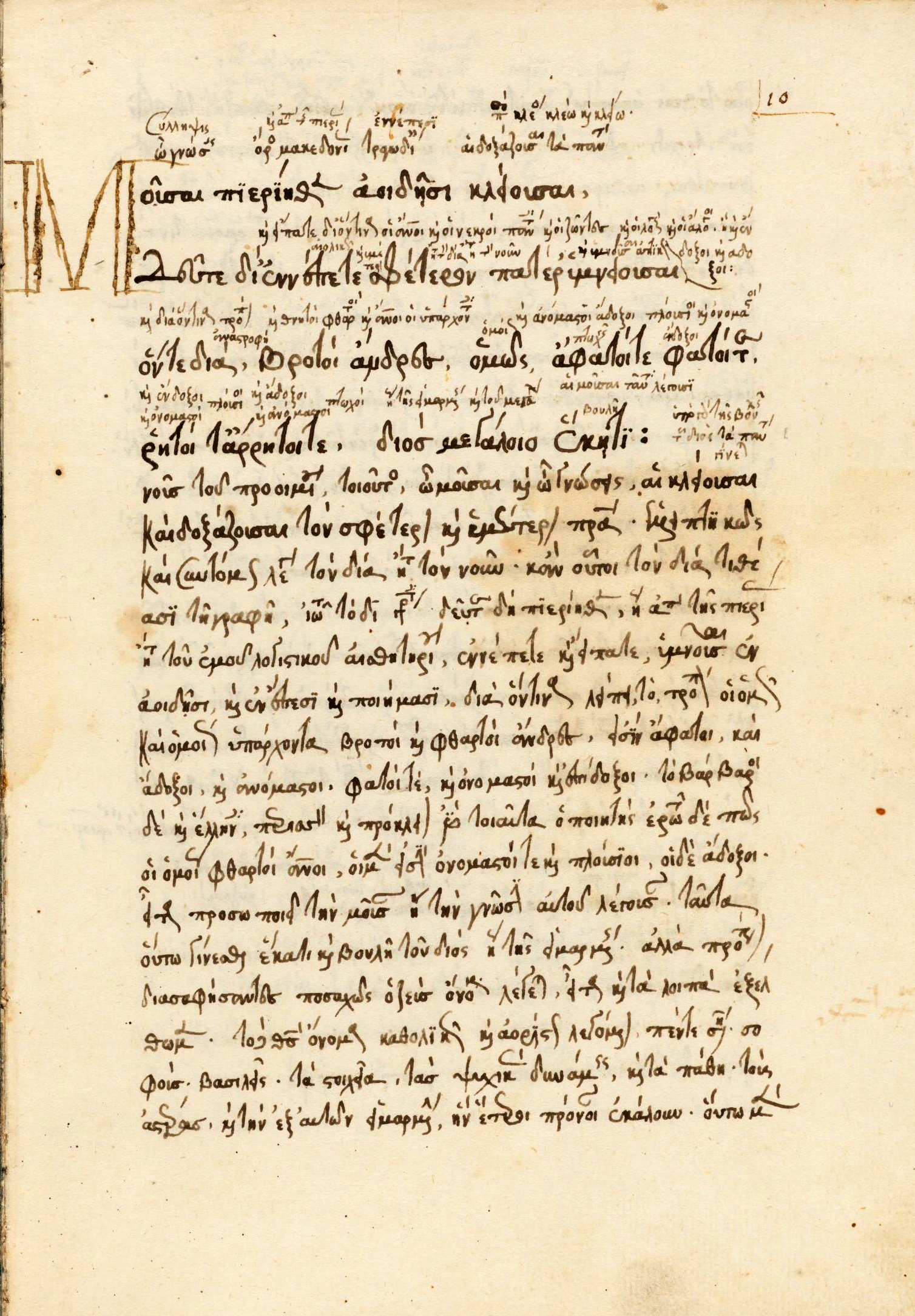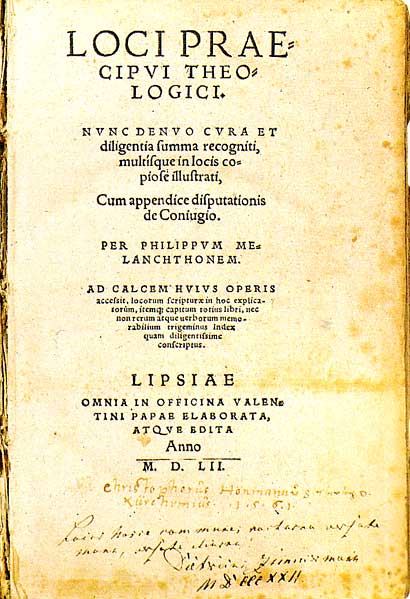|
Johann August Ernesti
Johann August Ernesti (4 August 1707 – 11 September 1781) was a German Rationalist theologian and philologist. Ernesti was the first who formally separated the hermeneutics of the Old Testament from those of the New. Biography Ernesti was born in Tennstedt in present-day Thuringia, where his father, Johann Christoph Ernesti, was pastor, besides being superintendent of the electoral dioceses of Thuringia, Salz and Sangerhausen. At the age of sixteen, Ernesti was sent to the celebrated Saxon cloister school of Pforta (''Schulpforta''). At twenty he entered the University of Wittenberg, and studied afterwards at the University of Leipzig. In 1730 he was made master in the faculty of philosophy. In the following year he accepted the office of conrector in the Thomas school of Leipzig, of which Johann Matthias Gesner was then rector, an office to which Ernesti succeeded in 1734. He was, in 1742, named professor extraordinarius of ancient literature in the university of Leipzig, ... [...More Info...] [...Related Items...] OR: [Wikipedia] [Google] [Baidu] |
Johann August Ernesti - Imagines Philologorum
Johann, typically a male given name, is the German form of ''Iohannes'', which is the Latin form of the Greek name ''Iōánnēs'' (), itself derived from Hebrew name ''Yochanan'' () in turn from its extended form (), meaning "Yahweh is Gracious" or "Yahweh is Merciful". Its English language equivalent is John. It is uncommon as a surname. People People with the name Johann include: Mononym *Johann, Count of Cleves (died 1368), nobleman of the Holy Roman Empire *Johann, Count of Leiningen-Dagsburg-Falkenburg (1662–1698), German nobleman *Johann, Prince of Hohenzollern-Sigmaringen (1578–1638), German nobleman A–K * Johann Adam Hiller (1728–1804), German composer * Johann Adam Reincken (1643–1722), Dutch/German organist * Johann Adam Remele (died 1740), German court painter * Johann Adolf I, Duke of Saxe-Weissenfels (1649–1697) * Johann Adolph Hasse (1699-1783), German Composer * Johann Altfuldisch (1911—1947), German Nazi SS concentration camp officer executed for wa ... [...More Info...] [...Related Items...] OR: [Wikipedia] [Google] [Baidu] |
Ancient Literature
Ancient literature comprises religious and scientific documents, tales, poetry and plays, royal edicts and declarations, and other forms of writing that were recorded on a variety of media, including stone, stone tablets, papyri, palm leaves, and metal. Before the spread of writing, oral literature did not always survive well, but some texts and fragments have persisted. One can conclude that an unknown number of written works too have likely not survived the ravages of time and are therefore lost. Incomplete list of ancient texts Bronze Age Early Bronze Age: 3rd millennium BC (approximate dates shown). The earliest written literature dates from about 2600 BC (classical Sumerian). The earliest literary author known by name is Enheduanna, a Sumerian priestess and public figure dating to ca. 24th century BC. Certain literary texts are difficult to date, such as the ''Egyptian Book of the Dead'', which was recorded in the ''Papyrus of Ani'' around 1240 BC, but other versions of ... [...More Info...] [...Related Items...] OR: [Wikipedia] [Google] [Baidu] |
Tiberius Hemsterhuis
Tiberius Hemsterhuis (9 January 16857 April 1766) was a Dutch philologist and critic. Life He was born in Groningen. His father, a learned physician, gave him a good early education and he entered the university of his native city in his fifteenth year, where he proved himself the best student of mathematics. After a year or two at Groningen, he was attracted to the University of Leiden by the fame of Perizonius. While there, he was entrusted with the duty of arranging the manuscripts in the library. Though he accepted an appointment as professor of mathematics and philosophy at Amsterdam in his twentieth year, he had already directed his attention to the study of the ancient languages. In 1717 Hemsterhuis was appointed a professor of Greek at the University of Franeker to replace Lambert Bos, but he did not enter on his duties there till 1720. In 1738 he became a professor of national history as well. Two years afterward, he was called to teach the same subjects at Leiden, whe ... [...More Info...] [...Related Items...] OR: [Wikipedia] [Google] [Baidu] |
Greek Classics
Ancient Greek literature is literature written in the Ancient Greek language from the earliest texts until the time of the Byzantine Empire. The earliest surviving works of ancient Greek literature, dating back to the early Archaic period, are the two epic poems the ''Iliad'' and the ''Odyssey'', set in an idealized archaic past today identified as having some relation to the Mycenaean era. These two epics, along with the Homeric Hymns and the two poems of Hesiod, ''Theogony'' and ''Works and Days'', constituted the major foundations of the Greek literary tradition that would continue into the Classical, Hellenistic, and Roman periods. The lyric poets Sappho, Alcaeus, and Pindar were highly influential during the early development of the Greek poetic tradition. Aeschylus is the earliest Greek tragic playwright for whom any plays have survived complete. Sophocles is famous for his tragedies about Oedipus, particularly ''Oedipus the King'' and ''Antigone''. Euripides is known f ... [...More Info...] [...Related Items...] OR: [Wikipedia] [Google] [Baidu] |
Latin
Latin (, or , ) is a classical language belonging to the Italic branch of the Indo-European languages. Latin was originally a dialect spoken in the lower Tiber area (then known as Latium) around present-day Rome, but through the power of the Roman Republic it became the dominant language in the Italian region and subsequently throughout the Roman Empire. Even after the fall of Western Rome, Latin remained the common language of international communication, science, scholarship and academia in Europe until well into the 18th century, when other regional vernaculars (including its own descendants, the Romance languages) supplanted it in common academic and political usage, and it eventually became a dead language in the modern linguistic definition. Latin is a highly inflected language, with three distinct genders (masculine, feminine, and neuter), six or seven noun cases (nominative, accusative, genitive, dative, ablative, and vocative), five declensions, four verb conjuga ... [...More Info...] [...Related Items...] OR: [Wikipedia] [Google] [Baidu] |
Lutheran
Lutheranism is one of the largest branches of Protestantism, identifying primarily with the theology of Martin Luther, the 16th-century German monk and reformer whose efforts to reform the theology and practice of the Catholic Church launched the Protestant Reformation. The reaction of the government and church authorities to the international spread of his writings, beginning with the '' Ninety-five Theses'', divided Western Christianity. During the Reformation, Lutheranism became the state religion of numerous states of northern Europe, especially in northern Germany, Scandinavia and the then- Livonian Order. Lutheran clergy became civil servants and the Lutheran churches became part of the state. The split between the Lutherans and the Roman Catholics was made public and clear with the 1521 Edict of Worms: the edicts of the Diet condemned Luther and officially banned citizens of the Holy Roman Empire from defending or propagating his ideas, subjecting advocates of Lutheranis ... [...More Info...] [...Related Items...] OR: [Wikipedia] [Google] [Baidu] |
Johann Salomo Semler
Johann Salomo Semler (18 December 1725 – 14 March 1791) was a German church historian, biblical commentator, and critic of ecclesiastical documents and of the history of dogmas. He is sometimes known as "the father of German rationalism". Youth and education He was born at Saalfeld in the Electorate of Saxony, the son of a poor clergyman. He grew up in pietistic surroundings, which powerfully influenced him his life through, though he never became a Pietist. In his seventeenth year he entered the University of Halle, where he became the disciple, afterwards the assistant, and finally the literary executor of the orthodox rationalistic professor S. J. Baumgarten. He also wrote Latin poems. In 1749 he accepted the position of editor, with the title of professor, of the Coburg official ''Gazette''. But in 1751 he was invited to the University of Altdorf as professor of philology and history, and in 1752 he became a professor of theology at Halle. Early work After the death of Bau ... [...More Info...] [...Related Items...] OR: [Wikipedia] [Google] [Baidu] |
Germany
Germany,, officially the Federal Republic of Germany, is a country in Central Europe. It is the second most populous country in Europe after Russia, and the most populous member state of the European Union. Germany is situated between the Baltic and North seas to the north, and the Alps to the south; it covers an area of , with a population of almost 84 million within its 16 constituent states. Germany borders Denmark to the north, Poland and the Czech Republic to the east, Austria and Switzerland to the south, and France, Luxembourg, Belgium, and the Netherlands to the west. The nation's capital and most populous city is Berlin and its financial centre is Frankfurt; the largest urban area is the Ruhr. Various Germanic tribes have inhabited the northern parts of modern Germany since classical antiquity. A region named Germania was documented before AD 100. In 962, the Kingdom of Germany formed the bulk of the Holy Roman Empire. During the 16th ce ... [...More Info...] [...Related Items...] OR: [Wikipedia] [Google] [Baidu] |
Sacred–profane Dichotomy
''Profanum'' is the Latin word for "profane". The state of being profane, or "profanity," refers to a lack of respect for things that are held to be sacred, which implies anything inspiring or deserving of reverence, as well as behaviour showing similar disrespect or causing religious offense. The distinction between the sacred and the profane was considered by Émile Durkheim to be central to the social reality of human religion. Etymology The term ''profane'' originates from classical Latin ''profanus'', literally "before (outside) the temple", "pro" being outside and "fanum" being temple or sanctuary. It carried the meaning of either "desecrating what is holy" or "with a secular purpose" as early as the 1450s. Profanity represented secular indifference to religion or religious figures, while blasphemy was a more offensive attack on religion and religious figures, considered sinful, and a direct violation of The Ten Commandments. Moreover, many Bible verses speak against ... [...More Info...] [...Related Items...] OR: [Wikipedia] [Google] [Baidu] |
Leipzig
Leipzig ( , ; Upper Saxon: ) is the most populous city in the German state of Saxony. Leipzig's population of 605,407 inhabitants (1.1 million in the larger urban zone) as of 2021 places the city as Germany's eighth most populous, as well as the second most populous city in the area of the former East Germany after (East) Berlin. Together with Halle (Saale), the city forms the polycentric Leipzig-Halle Conurbation. Between the two cities (in Schkeuditz) lies Leipzig/Halle Airport. Leipzig is located about southwest of Berlin, in the southernmost part of the North German Plain (known as Leipzig Bay), at the confluence of the White Elster River (progression: ) and two of its tributaries: the Pleiße and the Parthe. The name of the city and those of many of its boroughs are of Slavic origin. Leipzig has been a trade city since at least the time of the Holy Roman Empire. The city sits at the intersection of the Via Regia and the Via Imperii, two important medieval trad ... [...More Info...] [...Related Items...] OR: [Wikipedia] [Google] [Baidu] |
Lutheran Scholasticism
Lutheran orthodoxy was an era in the history of Lutheranism, which began in 1580 from the writing of the ''Book of Concord'' and ended at the Age of Enlightenment. Lutheran orthodoxy was paralleled by similar eras in Calvinism and tridentine Roman Catholicism after the Counter-Reformation. Lutheran scholasticism was a theological method that gradually developed during the era of Lutheran orthodoxy. Theologians used the neo-Aristotelian form of presentation, already popular in academia, in their writings and lectures. They defined the Lutheran faith and defended it against the polemics of opposing parties. History Martin Luther died in 1546, and Philipp Melanchthon in 1560. After the death of Luther came the period of the Schmalkaldic War and disputes among Crypto-Calvinists, Philippists, Sacramentarians, Ubiquitarians, and Gnesio-Lutherans. Early orthodoxy: 1580–1600 The ''Book of Concord'' gave inner unity to Lutheranism, which had many controversies, mostly between G ... [...More Info...] [...Related Items...] OR: [Wikipedia] [Google] [Baidu] |
Lutheran Orthodoxy
Lutheran orthodoxy was an era in the history of Lutheranism, which began in 1580 from the writing of the ''Book of Concord'' and ended at the Age of Enlightenment. Lutheran orthodoxy was paralleled by similar eras in Calvinism and tridentine Roman Catholicism after the Counter-Reformation. Lutheran scholasticism was a theological method that gradually developed during the era of Lutheran orthodoxy. Theologians used the neo-Aristotelian form of presentation, already popular in academia, in their writings and lectures. They defined the Lutheran faith and defended it against the polemics of opposing parties. History Martin Luther died in 1546, and Philipp Melanchthon in 1560. After the death of Luther came the period of the Schmalkaldic War and disputes among Crypto-Calvinists, Philippists, Sacramentarians, Ubiquitarians, and Gnesio-Lutherans. Early orthodoxy: 1580–1600 The ''Book of Concord'' gave inner unity to Lutheranism, which had many controversies, mostly between Gnesi ... [...More Info...] [...Related Items...] OR: [Wikipedia] [Google] [Baidu] |



.jpg)


